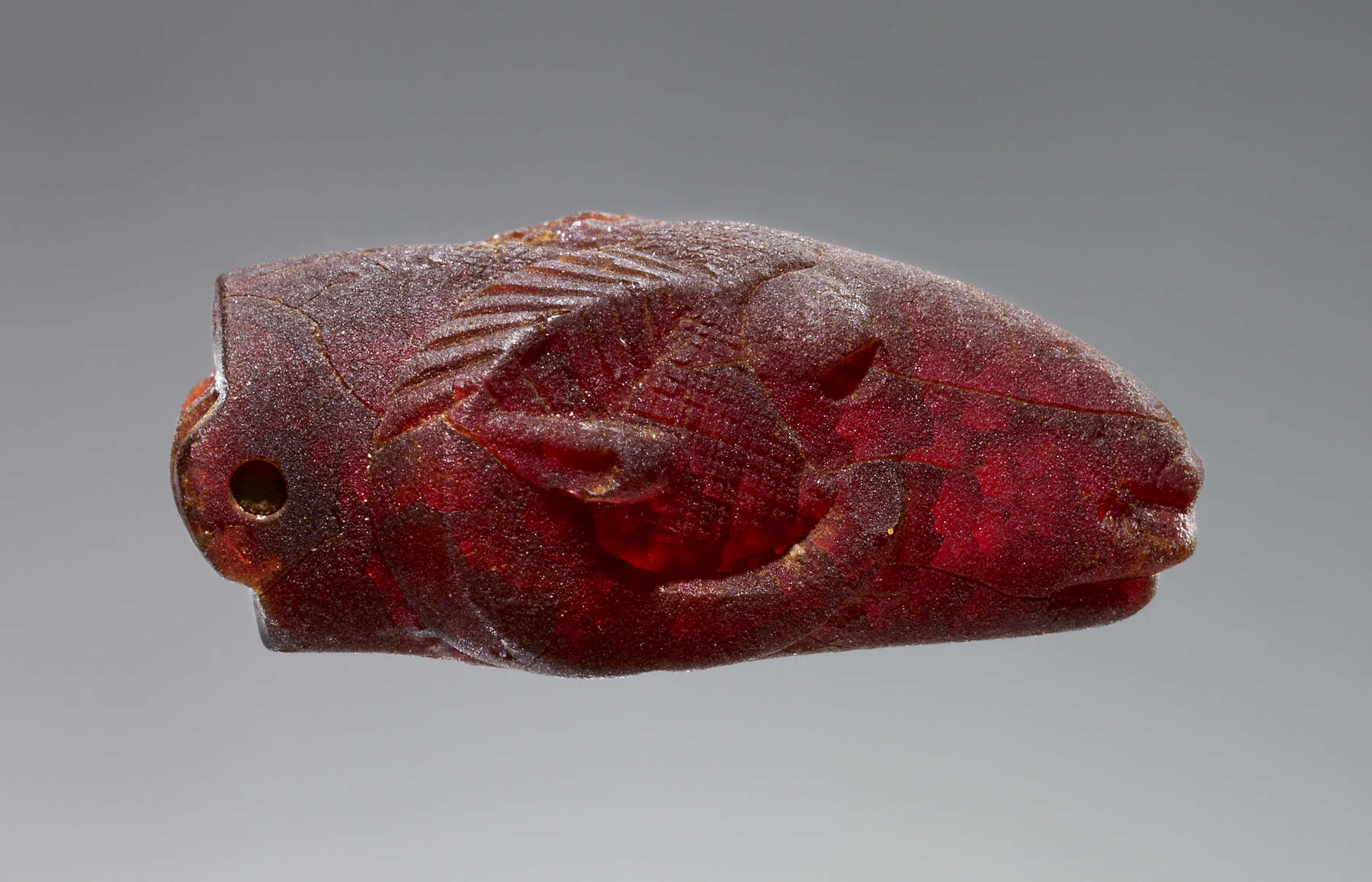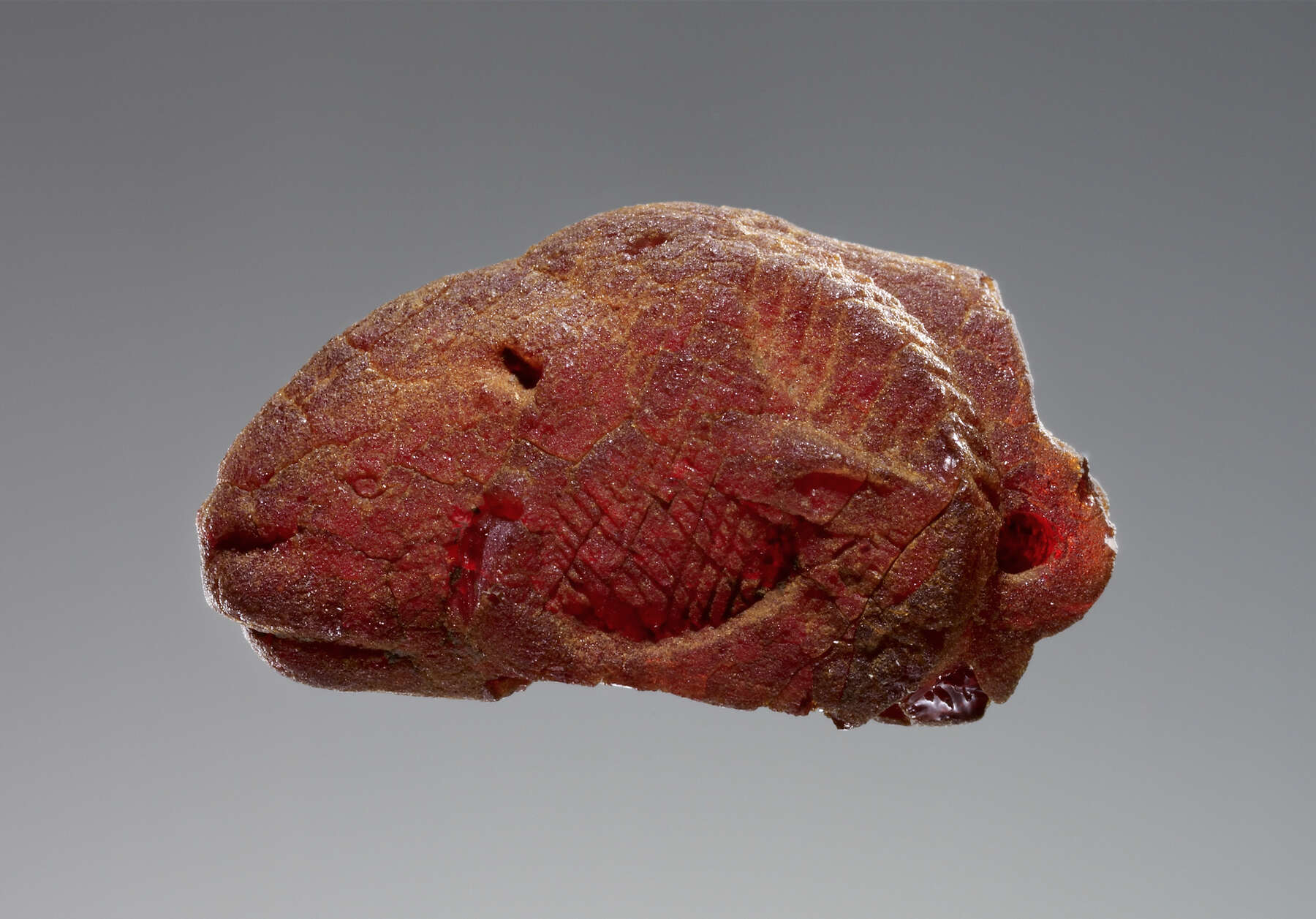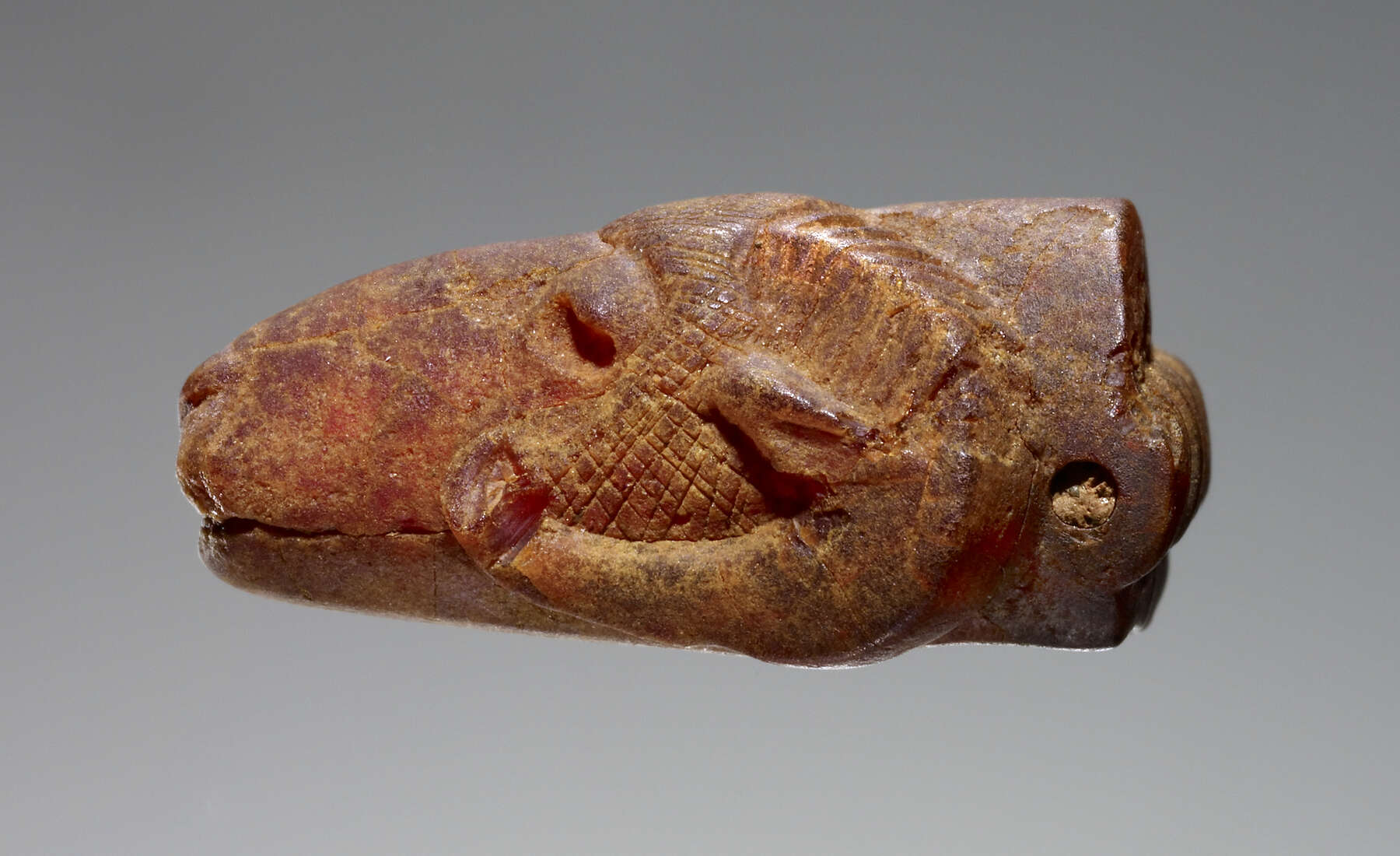45. Pendant: Ram’s Head
| Accession Number | 77.AO.81.15 |
| Culture | Italic |
| Date | 500–400 B.C. |
| Dimensions | Length: 36 mm; width: 19 mm; depth: 15 mm; Weight: 5.8 g |
| Subjects | Ram |
Provenance
–1977, Gordon McLendon (Dallas, TX), donated to the J. Paul Getty Museum, 1977.
Condition
The pendant is intact except for a chip on the proper right edge of the pendant back and minute chips at the tip of each horn. The surface shows crazing. The pendant has a reddish brown patina, with some yellow mottling at the forehead, at the left naris, and under the chin. The pendant may have been consolidated with amber oil. It is transparent in ambient light. In transmitted light, the pendant is bright orange, and fine subsurface cracking is visible. No inclusions are evident.
Description
The ram of this pendant has a long and sleek head, the tapering muzzle tipping down as in nature. The ocular cavity is simplified, the salient features indicated. The plastic, almond-shaped eyes are defined by surrounding incised grooves. The area below the eye is flat and the arch raised. A short, shallow groove extends downward from the inner corner of each eye toward a deeply incised naris. The division between the face and the fleece is sharp, with the line of the wool sweeping in a curve behind the eyes. The upper edge of the fleece is cut away sharply over each ear, resulting in a ledgelike ridge. Each horn is encircled with fourteen or sixteen closely spaced engraved ridges that extend from the base of the horn to a point just past the intersection with the tip of the ear. The remainder of the horn is smooth. The horns have sharp ends and flare outward. The collar area is narrower in circumference than the neck; it is an inverted flute or a flute with narrow fillets on either side.
A deep groove, 1.5 mm wide, begins at the upper edge of the back and extends 8 mm into the area between the horns, probably the result of removing a fault in the material. Two other grooves, 8 and 10 mm long, also likely resulting from fault removal, are located diagonally across the underside of the neck. Two 1.5 mm perforations were drilled 4 mm apart in the center of the back. The perforations are obstructed with dirt. It is possible that a filament was threaded through the holes. The pendant would have hung head downward.
Discussion
This head and the next four— (cat. no. 46), (cat. no. 47), (cat. no. 48), and (cat. no. 49)—look to be by the same hand. has a similar diamond-shaped poll and similar widely spaced ridges on the horns. The eyes are plastically modeled, which is especially apparent when the pendant is viewed on the dorsal side. The upper edge is sharply cut away over each ear, resulting in a ledgelike ridge. In profile, the animals show the same morphological features of the lower part of the head: they both have a long, narrow muzzle with a flat or slightly concave chin and neck. is very much like this pair, but it has a different decorative finial. One of the rams’ heads in London (British Museum 82) is especially close in form to 77.AO.81.15.1
Notes
- , p. 83, no. 82, pl. XXX. ↩
Bibliography
- Strong 1966
- Strong, D. E. Catalogue of the Carved Amber in the Department of the Greek and Roman Antiquities. London, 1966.




